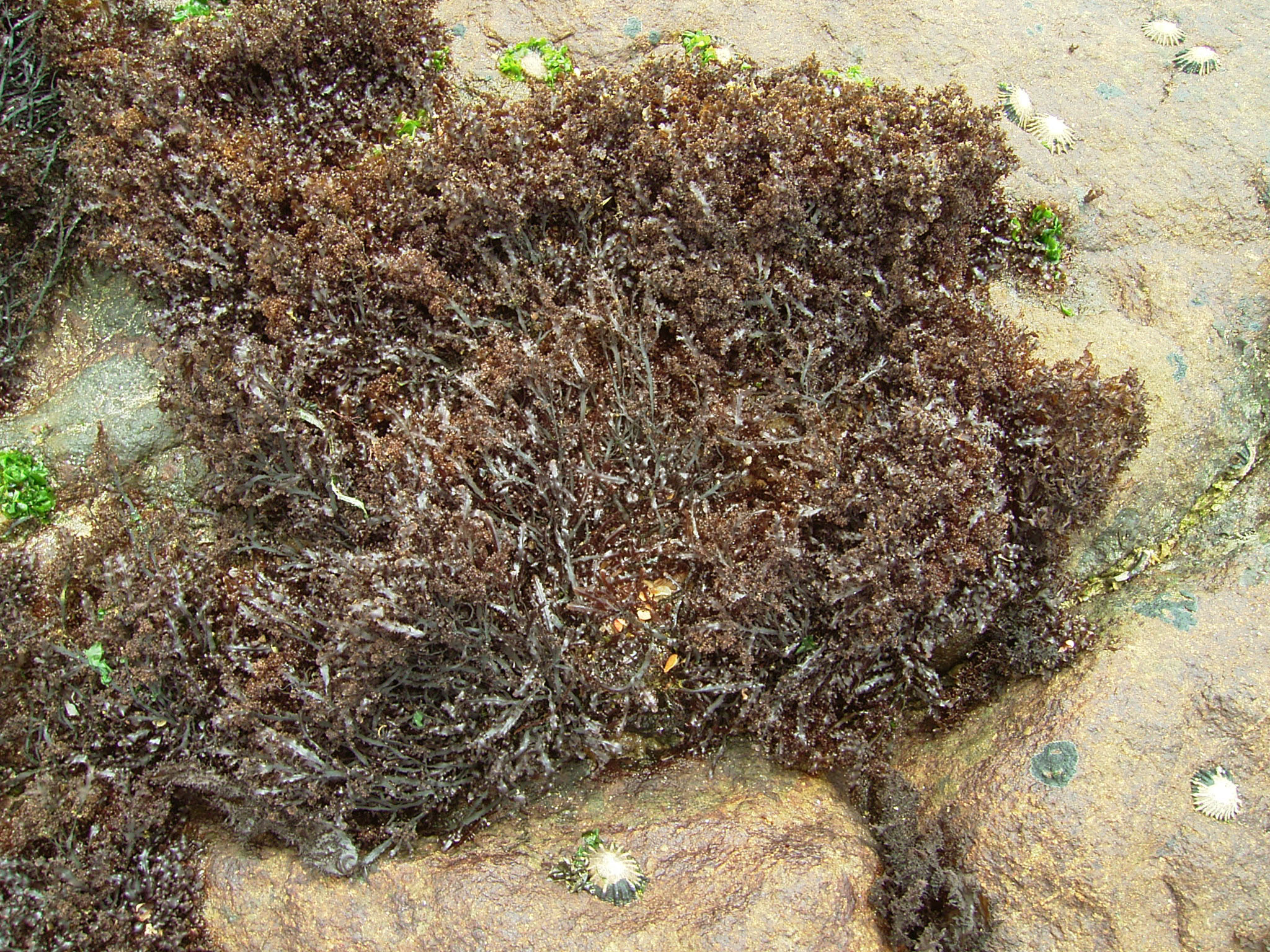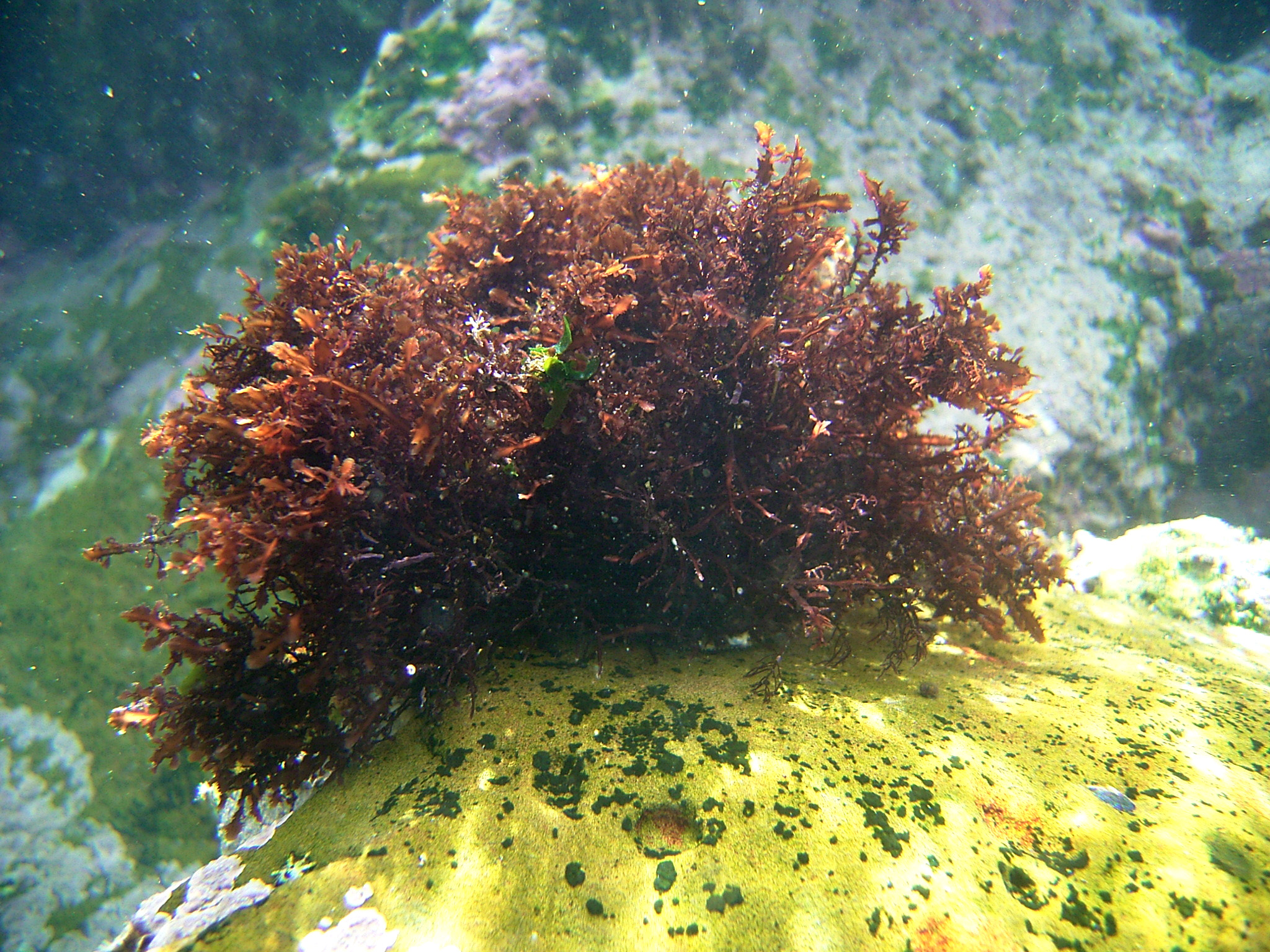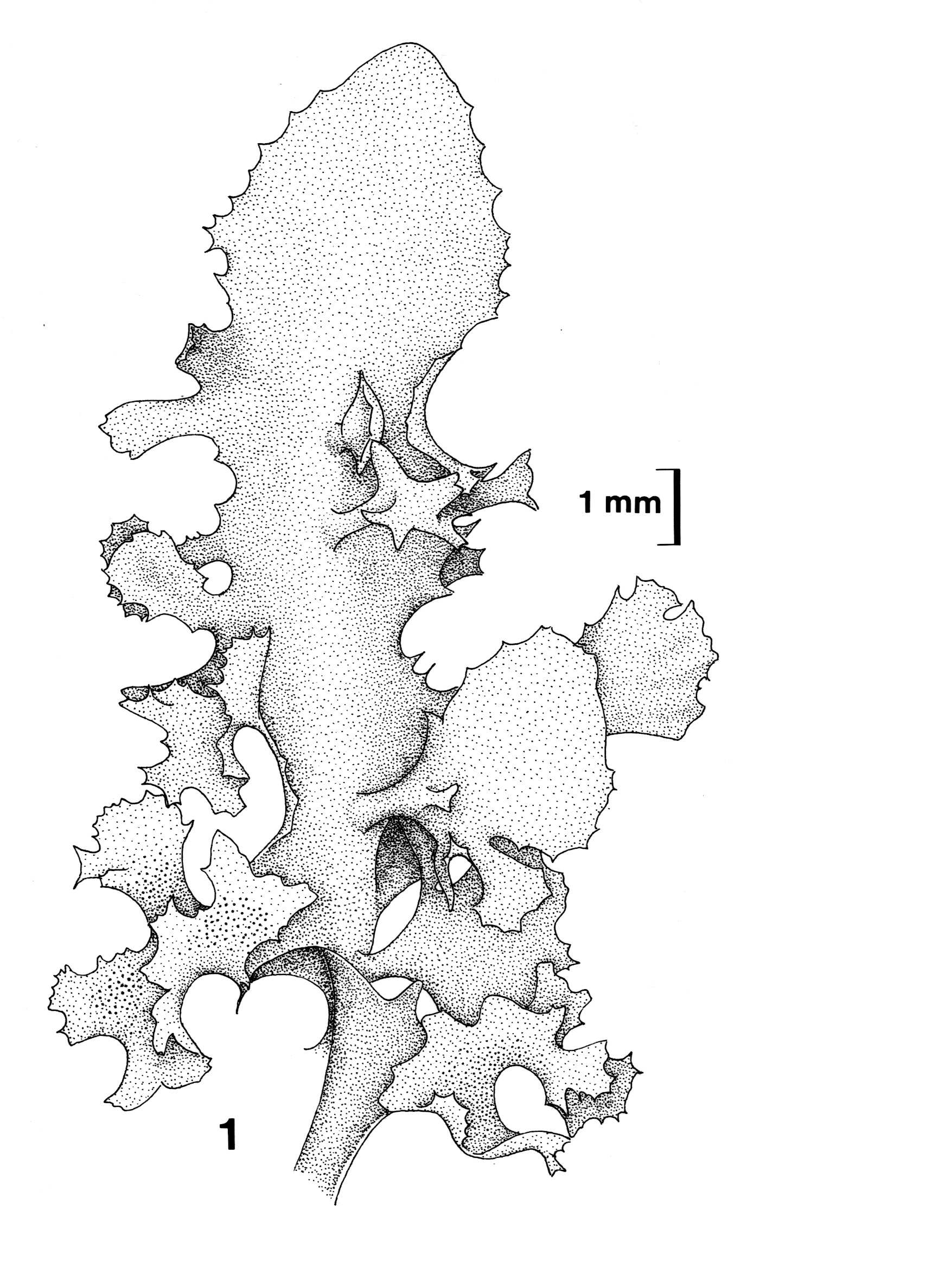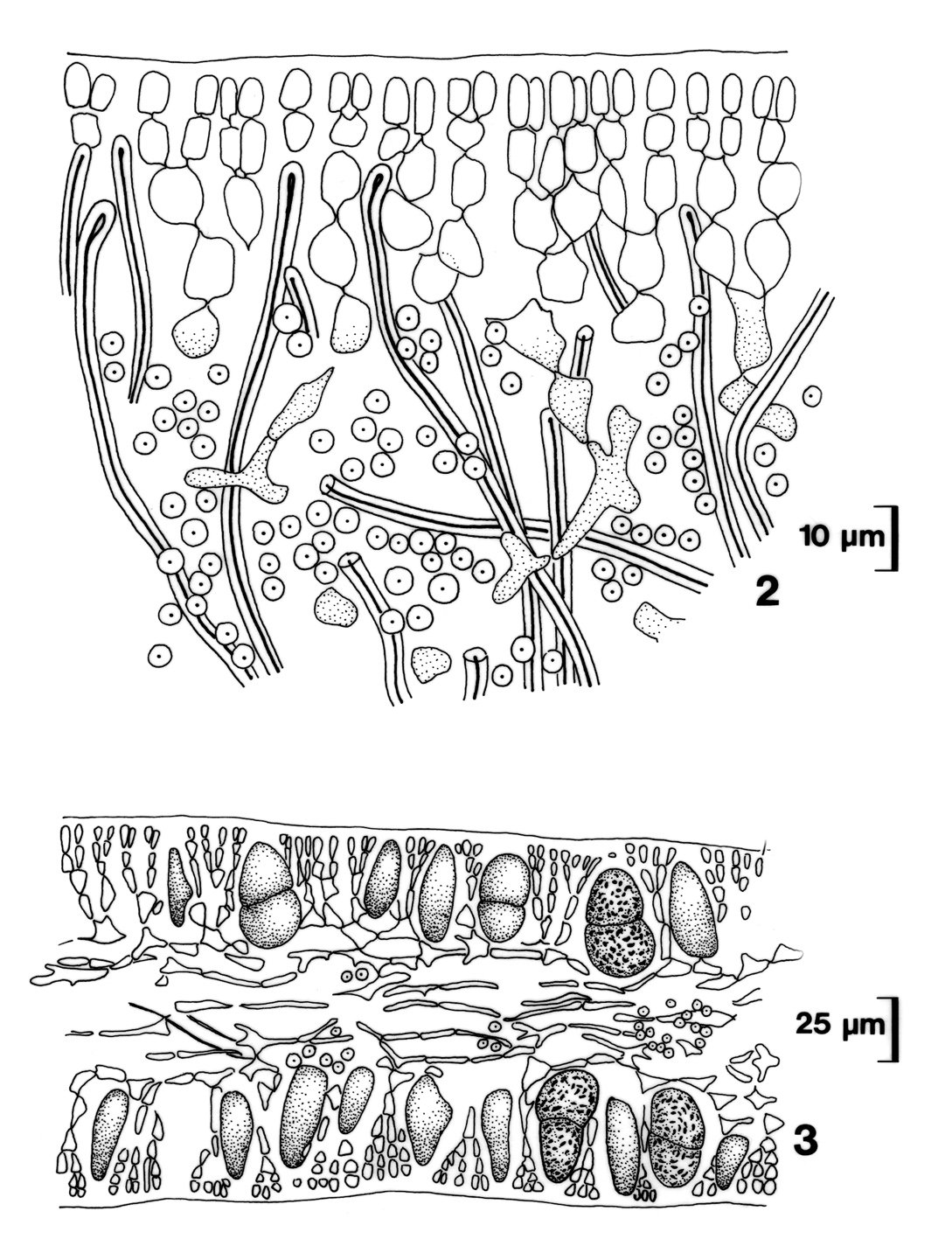Seaweeds of the South African South Coast


Order Gelidiales
Family Gelidiaceae
Gelidium pristoides (Turner) Kützing 1843: 407
Plants dark olive brown to black, tough, bushy with dense stoloniferous bases bearing several to many erect axes up to 10 (-20) cm tall; axes foliaceous, up to 3 (-5) mm wide, strap-shaped, proliferous, with toothed, undulating margins and distinct midrib about 0.5 mm thick; axes irregularly pinnately branched, branching also from midrib, whole plant thus not complanate. Rhizines abundant throughout central medulla and subcortical layer. Sporangial sori in marginal branchlets, producing bispores. Cystocarps protruding from both surfaces of fertile branchlets, usually with ostioles on both sides.
Collections ecology and regional distribution
Recorded from Sea Point, Cape Town, to Port Edward in Kwazulu-Natal (15-48), but most abundant on the south coast, where it is harvested commercially for the extraction of agar. Restricted to the eulittoral zone, where it is often dominant or abundant in the mid-lower eullitoral, growing on rock, shells of limpets, and tubes of the sandworm Gunnarea or coral-worm Pomatoleios. Sometimes forms a short dense turf in the mid-upper eulittoral; upright axes may then be less than 1 cm tall.
World distribution: South African endemic.
Type locality: False Bay, South Africa (Silva et al. 1996).
Notes: 1. This species was transferred to the genus Onikusa by Akatsuka (1986) but restored to Gelidium on the basis of morphological and molecular studies (Tronchin et al. 2002). 2. This is the most valuable commercial seaweed on the South African south coast, and its ecology and the effects of harvesting have been examined in some detail (see for example Anderson et al. 1991).

Gelidium pristoides, typical brownish-looking tuft. Siphonariid limpet in foreground is about 10 mm long.

Gelidium pristoides, underwater view of tuft growing on limpet shell.

Gelidium pristoides. Apex with bisporiferous proliferations. Reproduced from Stegenga et al. (1997).

Gelidium pristoides. 2. Cross section of main blade. 3. Section of proliferation with bisporangia.Reproduced from Stegenga et al. (1997).
References Gelidium pristoides
Anderson, R. J., Simons, R. H., Jarman, N.G. and Levitt, G.J. 1991. Gelidium pristoides in South Africa. Hydrobiologia 221: 55-66.
Akatsuka, I. Surface cell morphology and its relationship to other generic characters in non-parasitic Gelidiaceae (Rhodophyta). Botanica Marina 29: 59-68.
Kutzing, F.T. 1843. Phycologia generalis. Leipzig, 458 pp., 80 pls.
Silva, P.C., Basson, P.W. & Moe, R.L. 1996. Catalogue of the benthic marine algae of the Indian Ocean. University of California Publications in Botany 79: 1-1259.
Stegenga, H., Bolton, J.J. and R. J. Anderson. 1997. Seaweeds of the South African west coast. Contributions from the Bolus Herbarium 18: 655 pp.
Tronchin, E.M., Freshwater D.W., Bolton J.J. and R.J. Anderson 2002. A reassessment and reclassification of species in the genera Onikusa Akatsuka and Suhria J. Agardh ex Endlicher (Gelidiales, Rhodophyta) based on molecular and morphological data. Botanica Marina 47: 548-558.
Cite this record as:
Anderson RJ, Stegenga H, Bolton JJ. 2016. Seaweeds of the South African South Coast.
World Wide Web electronic publication, University of Cape Town, http://southafrseaweeds.uct.ac.za; Accessed on 07 January 2026.